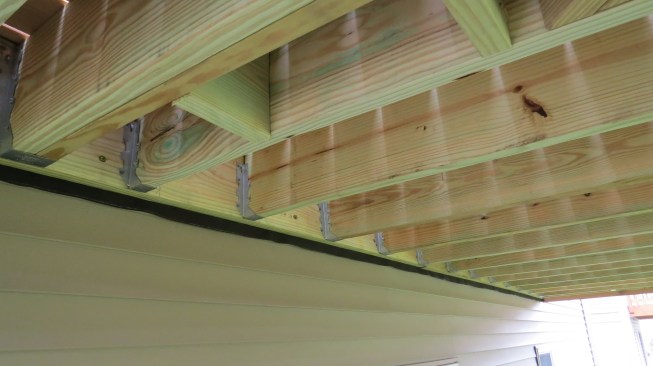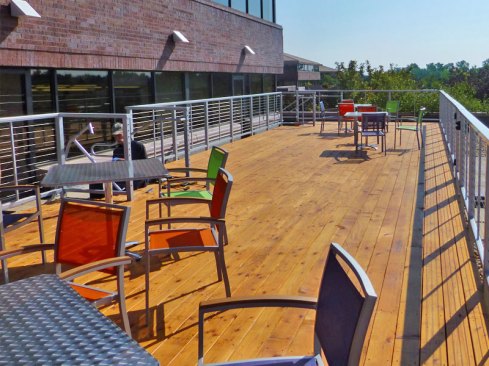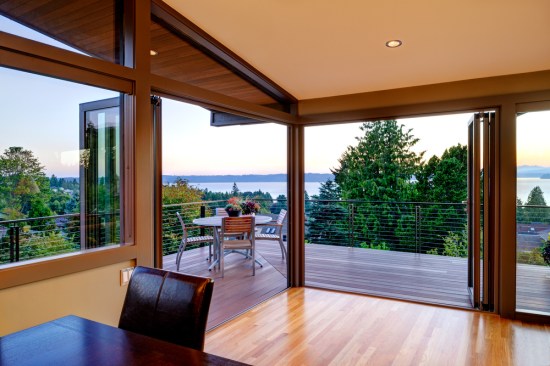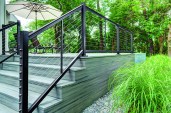Decks in need of repair or replacement sometimes don’t reveal their flaws until it’s too late. That’s when homeowners are having a big gathering on the deck that puts just enough pressure on worn out parts to cause a collapse.
“When a deck reveals it has a problem is often when it has the most people on it,” says Tim Brown, owner of PHI Decks. “We see two or three of these incidents a year.”
Sometimes, Brown says, older decks can be salvaged with repairs. Other times, the only solution is replacement. “There are some homes where we won’t even go out on the deck because just looking at it, we can tell it’s not going to hold up much longer.”
Unfortunately, most decks don’t reveal their problems so easily. That’s why along with constructing decks, professional deck builders also need to know how to determine whether to repair or replace — and how to talk to their customers about it.
Here are three major areas to examine when asking the repair vs. replace question:
1. Footings. As the foundation of the deck, concrete footings are often the first place to look for trouble. Footings face two major problems: heaving and dropping. Either one can cause a deck to become uneven and unstable. Heaving typically happens from freeze/thaw conditions. Dropping is often the result of footings being poured on disturbed soil, such as backfill. “Both of those are tell tale signs that something needs to be done,” Brown says. Sometimes, those issues can be repaired, but often they’re a sign of other problems that call for replacement.
2. Metal connectors. Wherever wood is attached to another piece of wood, a metal connector should be in place to reinforce and strengthen that connection. If not, the deck likely has problems, Brown warns. Begin the inspection where the posts meet the footing. A metal base should be bolted to the footing that attaches to the post base. These metal bases often include a stand-off base in which the post sits. Stand-off bases further protects posts against water damage because the bases hold posts off the footing where water can collect.

Ledger with proper joist hangers installed | Courtesy of Tim Brown, PHI Decks
“When those are missing it’s an indication that something is not done quite right,” Brown says.
The International Residential Code also requires metal connectors at other key connections: post to beam, joist to beam and joist to ledger, Brown says. If those are missing, often connections are simply toenailed together. If, and when, the wood rots, nailed connections will not hold. But metal connections maintain their support better even if rot occurs.
3. Railings. Railings are more than ornamental. They also protect against falls, which becomes more important the higher the deck is off the ground. As such, these are one of the most crucial areas to inspect. “If it doesn’t feel safe, it probably isn’t safe,” Brown says. His rule of thumb: if the railing can be moved more than an inch or two at the top, it’s an indication that it’s time for replacement.

Properly installed railings and infill provide safety, security and beauty in commercial and residential projects | Courtesy of Feeney, Inc. | Photo: Provident Construction
Brown also bears in mind the International Residential Code for deck rails, which requires any deck more than 30 inches above the ground to have a guardrail, though any deck with a guardrail must follow code. The IRC also requires that rails be a minimum height of 36 inches above deck surface (some states, such as California, may require a 42 inch height). Be sure to check local codes. Stair rails must be 34 to 38 inches above the nosing of the stair. And the maximum space allowed between balusters is 4 inches.
For homes with the right aesthetic and view, Brown’s go-to replacement is cable railing because it’s strong and maintains views. “It’s a great finished look and it stands the test of time,” he adds.

Courtesy of Dave Pelletier Architect | Photo: Will Austin Photography
To obtain a handy deck evaluation checklist, and read about NADRA’s “Deck Safety Month” visit Feeney Features.



